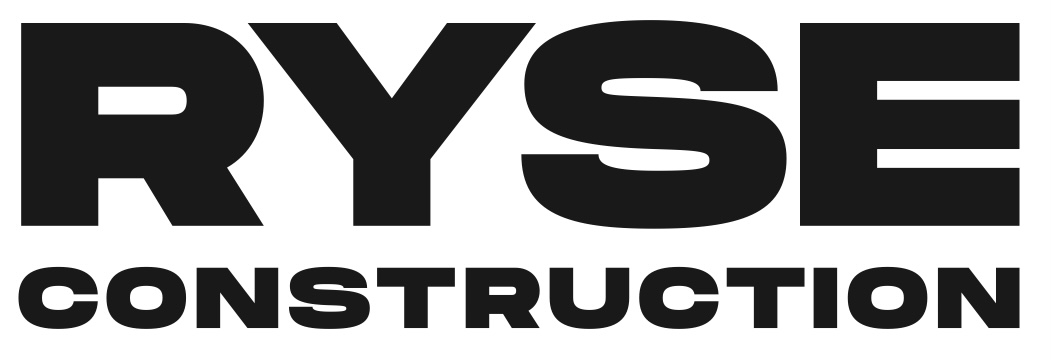Title Page
-
Job Number
-
Address
-
Inspection Date
-
Framer
-
Site Supervisor
Roof
-
All trusses nailed down to walls
-
Strapping maximum 10’ span
-
Vent holes cut out
-
Ridge blocks installed
-
Roof strap installed on peak
-
Access to roof
-
Insulation stops installed properly
-
Vaulted ceiling gable end to have insulation strapping
-
All pork chops are installed and sheeted
Bathroom
-
Install tub deck (if applicable)
-
Shower and tub backing on nailing fins
-
All rooms are correct size
-
Backing for toilet paper holder & Towel Bar
-
Medicine cabinet opening framed out at 48” above finished floor (if applicable)
-
Vanity backing at 32” above finished floor (or 36” if vanities are raised)
-
Cabinets are marked out
-
backing at edges of tile shower for den-shield (if applicable)
-
Check trusses above tub for square corners
-
Check for blocking around ceiling fans.& bathroom, pot-lights, speakers for acoustic seal
Stairs
-
Stairs screwed to landing and to side walls
-
Headroom minimum 6’-8” from stringer
-
Backing for handrail at 27” to centre (Min 2x8) from top of stringer
-
Safety railing installed and rail boots screwed to floor
-
Landing supports installed
-
Shoe capping on stairs & there is a 4” clearance between tread and top of cap
-
Poly behind stairs on exterior wall
-
1”x4” on side of stringers and flush to bottom of stringer
-
Confirm basement stairs have hidden (dev. area) or visible stringer (undeveloped area)
Upper Floor
-
All wall corners are plumb & square
-
Top of windows are even
-
1/8” gap in wall plywood
-
Insulation, poly behind all tight corners and perpendicular walls
-
Truss uplift clips on interior walls - 3/8” OSB strips, 8” wide - min. 18” on either side of wall
-
Attic access installed
-
Drywall access cut out on exterior wall
-
Point loads under all girders
-
All door RO’s are correct
-
Mark all door sizes & hinges on cripples
-
Ensure all cripples are nailed to floor
-
Mark all finished floor transitions
-
All window headers are correct
-
All windows are in correct locations
-
Floor is screwed by framer
-
Backing for upper floor railing
-
Check all walls for bowed studs
-
All rooms are correct size, especially bathrooms, laundry rooms
-
Directional backing blocks for drywall
-
2x6 or 2x8 mechanical walls
-
Check pony wall height 39” at hallway and 36” at stairs
-
Heat holes cut out
-
Blocking for return airs
-
Backing installed to provide solid backing at all poly joints
-
Roof vents cut out
Basement
-
Tele-posts plumb
-
Lag bolts installed in tele-post plate
-
Basement wall bottom plates wrapped in poly
-
Beams nailed properly
-
Tight joist spacing insulated and poly’d
-
Point loads installed in basement where necessary
-
Beam pockets are filled for support with appropriate materials
-
Stair walls to be installed, insulated and poly’d
-
Squash blocks installed for all bearing walls
-
Install blocking behind all hangers in joist spacing (dep. on eng layouts)
-
All hangers are filled in with appropriate nails
-
Wood posts are plumb and are wrapped in poly at the base
-
All wall corners are plumb – flush beams are flush with joists
-
Stairs raised up and braced properly to accommodate concrete floor pour
-
Check beams/joists for level
-
Backing installed to provide solid backing at all poly joints
-
OSB backing for hose bib (Zero lot lines homes)
Main Floor
-
All wall corners are plumb – flush beams are flush with joists
-
All corners are square
-
Top of windows are even
-
1/8” gap in wall plywood
-
Cold corners are insulated
-
Poly behind all perpendicular walls
-
Point loads under all bearing points
-
All door RO’s are correct
-
Mark all door sizes & hinges on cripples
-
LB Board re-installed (elec. Low voltage conduit on ext.)
-
Ensure all cripples are nailed to floor
-
Mark all finished floor transitions
-
All window headers are correct
-
All windows are in correct locations
-
Floor is screwed by framer
-
Backing for wall railing
-
Check all walls for bowed studs
-
All rooms are correct size especially washrooms, laundry rooms
-
Directional backing blocks for drywall
-
2x6 or 2x8 mechanical walls
-
Stub wall for cabinets securely fastened through floor
-
Confirm cabinet layout mark-out is what is on plans
-
Check engineered tall wall detail
-
Heat holes cut out
-
Backing for return airs
-
Bearing walls to have a stud under each joist
-
Strap cut out top plates
-
Insulation, poly and drywall behind all tubs
-
Insulation, poly and drywall behind fireplace
-
Backing for TV’s (if requested)
-
Exterior doors are shimmed, hinges screwed properly, doors opening/closing properly
-
Top of windows are even
-
Check kitchen island pony wall height, ensure it’s plumb and level
-
Heat box outs cross blocked properly
-
Check beams/joists for level
-
Kitchen cabinet walls @ 16” o.c.
-
Backing installed to provide solid backing at all poly joints
-
Bracing under subfloor for railing post sitting on floor
-
Stub wall secured to stairs and enough support for railing
-
Pry bar backing installed beside deadbolt plates on exterior doors (req. in Airdrie)
-
Backing on kitchen island pony wall for brackets (brackets evenly spaced in thirds of PW)
-
Ends of pony walls are braced at the bottom & middle of the ponywall, shimmed to stairs. Mid-span bracing is notched into studs
Floor Joists
-
Point load blocking is installed
-
Check all hangers have proper fasteners
-
Ensure no joists are cut by heat holes or plumbing holes
-
Joist blocking every 4 feet between pony wall and first joist
Garage
-
Attic access in garage ceiling
-
Garage height installed as per plans
-
3 ply beam over front garage door
-
Dropped ceiling as required
-
Min. 12” spacing between dropped ceiling and top of garage door opening
-
Directional blocking if necessary
-
Install garage man door c/w shims and screws in all hinges
-
Beam nailed as designed
-
Wedge anchors on bottom plate every 2’ on detached garage pads (if no curb wall)
-
Block for garage door track above garage door beam is screwed to beam
Exterior
-
Deck nailer installed with Tyvek behind deck nailer
-
Walk out deck nailer has SDS screws installed
-
Tyvek paper behind all windows and doors
-
Tyvek paper installed on all perpendicular walls
-
Tyvek paper wrapped around entire bottom of window sill
-
Exterior OSB stapled properly
-
Elevations are correct
-
Front veranda floor protected with OSB sheeting as required
-
Window locations are confirmed
-
*Ensure window is shimmed according to manufacturer recommendations*
-
Exterior door swings are correct
-
Windows and doors nailed properly
-
Cantilevers sheeted on underside
-
Paper behind rooflines/trusses/gable blocking and build outs
-
Check for flared corners for stone as per plans
-
Porch post is installed properly on front step c/w proper overhangs
-
Backing behind sheeting at stone/batten transitions
Safety
-
Interior of home is swept and clean of all debris
-
Site is cleaned
-
Lumber is stacked in accessible location via a forklift and called in for credit
-
Access ramp is on front doorstep (if applicable)
-
Railing is on access ramp (top and mid rail)
-
Interior railing is installed correctly around all openings
-
Exterior fencing is installed properly
-
Proper access from street to front steps
-
Door knobs/locks installed on all exterior doors
-
Guard rails around front porches, installed in rail boots
Miscellaneous/Comments
-
Inspect curb stop for damage prior to and at the end of framing
-
Inspect sidewalk & curbs for damage prior to and at the end of framing
-
Shim Specs:
- Shim windows as per manufacturer instructions, see detail on plans.
Completion
-
Additional Comments
-
Framer Name and Signature
-
Site Supervisor Name and Signature











